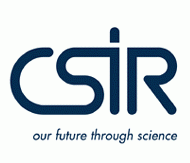The CSIR’s National Laser Centre has created what it calls the world’s first digital laser. South African scientists working at the centre have created a means of controlling a laser beam’s shape digitally and they claim the implications for health, manufacturing, communications and other industries could be enormous.
 Laser devices traditionally consist of mirrors, light and a casing containing a material such as crystal or glass. The material changes the frequency of the light to create a laser beam.In conventional lasers, the shape of the beam is either left uncontrolled or is forced into a specific shape using costly optics. For example, surgical lasers are used for precision cutting.
Laser devices traditionally consist of mirrors, light and a casing containing a material such as crystal or glass. The material changes the frequency of the light to create a laser beam.In conventional lasers, the shape of the beam is either left uncontrolled or is forced into a specific shape using costly optics. For example, surgical lasers are used for precision cutting.
The digital laser uses a “spatial light modulator” — it has a liquid crystal display (LCD) that can be “digitally addressed” with grayscale images that alter the beam.
Andrew Forbes, who leads the project at the NLC, says the digital laser uses the LCD as one of its mirrors and this is fitted at one end of the laser cavity. Because the LCD serves as a mirror, changing the image it displays changes the shape of the laser beam that is emitted.
This allows for digital control of the beam in real time, prompting the name “digital laser”. According to Forbes, this could have huge implications for many of the industries in which laser technology plays a role.
More Info @ TechCentral




